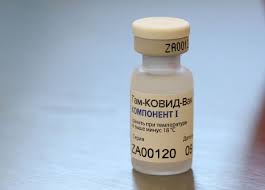Russia’s Sputnik V vaccine is 91.4 per cent effective in protecting COVID-19 and has demonstrated 100 per cent efficacy against severe coronavirus cases, the vaccine’s developers said on Monday.
“The efficacy of the Sputnik V vaccine is 91.4 per cent, based on the final control point analysis of data obtained 21 days after administering the first dose,” Gamaleya Center and the Russian Direct Investment Fund (RDIF) said in a statement. The vaccine demonstrated 100 per cent efficacy against severe coronavirus cases, it added.
Based on the data obtained at the third control point, the Gamaleya Center will create a report that will be used to submit for accelerated registration of the Sputnik V vaccine in various countries, the statement said.
“The new data on efficacy of the Gamaleya Center vaccine is extremely encouraging. Today it has become obvious to everyone that the end of the pandemic is possible only after the mass vaccination of the entire global population,” Minister of Health of the Russian Federation Mikhail Murashko said.
In this regard, ensuring equal access to effective and safe vaccines, including the Sputnik V vaccine, for people in every country should be the goal of foreign regulatory bodies and international organizations, he added.
“Results the Sputnik V vaccine has demonstrated during the Phase III clinical trials support our confidence in its high efficacy and complete safety for health,” Gamaleya Center Director Alexander Ginsburg said.

Jupiter, Saturn ‘Merge’ in Rare Cosmic Event After Nearly 400 Years

People across India and the rest of the world witnessed a rare celestial phenomenon, the great conjunction of Saturn and Jupiter on Monday. The celestial event made Jupiter and Saturn appear as one bright star in the night sky.
This is the first time in over 400 years that the two appeared so close to each other, though regular conjunctions take place every 20 years. This is the closest these two planets have been recorded since 1623. That Great Conjunction of Jupiter and Saturn took place more than a decade after the telescope was invented.
The “great conjunction” is popularly referred to as the “Christmas Star.” On December 21, almost all the viewers across the world were able to see the two gas giants very close to each other, while they were still hundreds of millions of miles apart in space.
People gathered to watch the phenomenon, on rooftops and open grounds in different parts of Kolkata and West Bengal though the winter fog partially hindered the view. The celestial event brought many sky enthusiasts, especially students, to terraces with mini telescopes in Kolkata. The Birla Industrial and Technological Museum too saw the turnout of many students who participated in the special viewing of the event and attended the lectures by experts.
“The two planets have never been so close since 1623,” Director of M P Birla Planetarium, Debi Prasad Duari, said.
He said, “If two celestial bodies visually appear close to each other from the Earth, it is called a conjunction. And such conjunction of the Saturn and the Jupiter is at times called a great conjunction” if it happens once in a lifetime.




